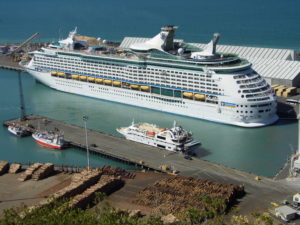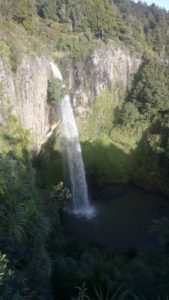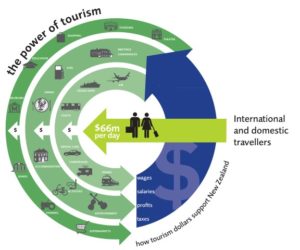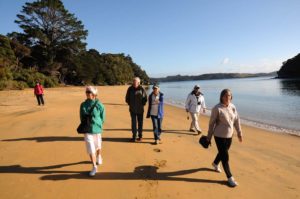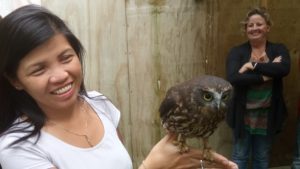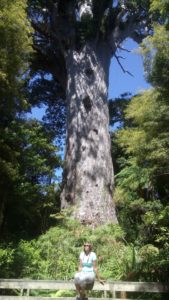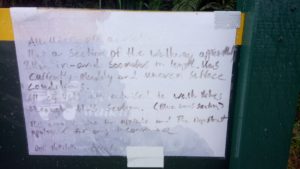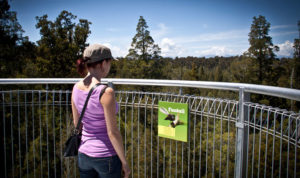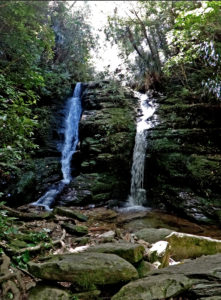Archive for the ‘Our thoughts…’ Category
NZx – May 30th: alternative facts
Naumai
The recent public debate (which is full of alternative facts) about Auckland’s proposed bed tax highlights the gaps between local and central government funding, and the lack of understanding as to how tourism adds benefits and costs to all aspects of the New Zealand economy.
Many people have a view on the tax but only a few reflect the facts. Tourism Industry Aotearoa, Chief Executive Chris Roberts says the commercial accommodation sector receives just 9% of the total visitor spend in Auckland source (Ministry of Business Innovation and Employment).
“The original targeted rate proposal was for 330 commercial property owners to pay the full cost of Council tourism and event promotion. The cost of that promotion is currently shared by every ratepayer in Auckland, residential and commercial.
“It is still not the fair share that Mayor Goff repeatedly talks about. The small targeted group receives around 7-8% of the total visitor spend in Auckland, and yet is being asked to pay 50% of promotion and event support.”
We note that in 2014 international and domestic visitors spent $ 66 million per day in New Zealand communities. Thats a fact.
Shamubeel Eaqub also believes the plan offers no clear alignment between costs and benefit. You can read his original article here http://www.stuff.co.nz/business/opinion-analysis/93272191/shamubeel-eaqub-bed-tax-reveals-local-government-flaws
With 2017 being an election year , one assumes there will soon be a large amount of alternative facts in circulation. Tourism will need to make sure it’s voice is united, clear and more importantly heard.
NZx – April 24th: “keeping the clouds and borrowing the moon”
Naumai
Visiting Dunedin is always a great experience. Next time you are there, visit the Dunedin Chinese Gardens. The Gardens reflect the contribution people from China have made, and continue to make, to Dunedin. This is an authentic experience with the picturesque and peaceful surroundings reflecting the spirit of the place and the concept of “keeping the clouds and borrowing the moon”.
Most Chinese festivals are observed by eating a particular food as a custom, and the Dragon Boat Festival is no exception. Zongzi, a pyramid-shaped glutinous rice dumpling wrapped in reed leaves, is the special food eaten to celebrate the day. It has various fillings. In north China, people favor the jujubes as the filling, while the south sweetened bean paste, fresh meat, or egg yolk.
The Dunedin Chinese Garden recently celebrated the legend of Qu Yuan, and integral part of world-wide Dragon Boat festivals. A fun family day was held with different events based around this fascinating legend. As part of celebrating the legend, the Garden’s also offered visitors the chance to try Zongzi.
Our order taken we sat in the Tea House listening to melodious singing from Tai Chi exponents. The pork Zongzi arrived but on unwrapping the glutinous rice was cold and uncooked. A new dish eventually arrived but again fell well short of an authentic warm dish. The staff did recognise the issue with a free gift which helped, but the experience failed to maximize the cultural opportunity and link to the event.
In the competitive field of visitor experiences you get one chance to make a great impression. This is even more so when you are dealing with cultural experiences. The opportunity to introduce visitors to authentic cultural based food was missed – the experience reflecting negatively on our otherwise good experience.
Zongzi
NZx March 25th: the pace of change
Naumai
There is no doubt that the pace of change in New Zealand tourism is continuing to grow: everywhere you look there are more visitors out there experiencing what NZ has to offer. A recent trip to the West Coast confirmed that. Even a site like Oparara http://www.karameainfo.co.nz/oparara-basin/ was very busy.
Some of the tourism issues have or are being well debated. Issues such as freshwater, overcrowding at key sites, climate change and visitor levy’s are all part of the current “conversation”.
On a broader level, but very closely aligned with increasing tourism, a number of issues were highlighted last year by Jan Wright, Commissioner for the Environment. Wright raised four key issues: climate change, slow progress in marine protection, lack of trees on unstable hill country, and concerns over the future of our wildlife.
She made the interesting point that environmental issues, rather than separate domains (air, land, marine, climate and fresh water), should form the basis of the shared story. This more holistic approach makes common sense.
Wright’s comments reflect the split in the key debates, and lack of an holistic approach, being canvassed over NZ tourism, the environment and business.
Mayor Goff’s accommodation tax being one such initiative.
A wider, holstic example is the recent study identifying Rakiura’s Port Pegasus for a potential new salmon farming enterprise http://www.stuff.co.nz/southland-times/news/90883538/Stewart-Island-chosen-for-possible-new-aquaculture-project . This central-government funded programme involves Ngai Tahu, the Department of Conservation, the Ministry for the Environment, the Ministry of Primary Industries and the Ministry of Business, Innovation and Employment. Sorry – where is tourism in that mix? Its unbelievable that tourism opportunities are currently heavily restricted in Pegasus yet an industry with doubtful environmental credentials is being supported.
NZ tourism is entering a sensitive phase, particularly in regard to the potential effects on local communities of such growth and the shutting out of potential added value tourism opportunities.
Ka kite ano
Malcolm
NZx February 22: A true kiwi experience
Naumai
Looking for a true example of a sustainable kiwi experience? Wingspan (the National Bird of Prey Centre), nestled in the picturesque Paradise Valley just north of Rotorua, is a great example.
Established in Rotorua in early 2000 the key objective is to celebrate and share New Zealand’s unique natural heritage, particularly taonga such as falcon (karearea) , kahu (Australasian Harrier) and morepork (ruru).
The key elements, from a purely visitor experience, are the interaction between the guides and the audience, the guides and the raptors and the raptors and you. A chance to see raptors fly, have them land on your hand and head (!) .
The Centre also has a small Visitor Centre and shop but your focus should be on on the interactive afternoon session www.wingspan.co.nz
Like so many conservation initiatives in New Zealand the enterprise is underfunded. Its definitely a real kiwi experience, not overdone and truly interactive.
Visit and help celebrate our taonga!
Ka kite ano
Malcolm
NZx January 27th: Northland / Te Tai Tokerau
Naumai
Northland /Te Tai Tokerau is a fantastic place. There are many icons to visit here; Tane Mahuta, Russell, Waitangi, Cape Reinga or any beach with golden sands, pohutakawa and sparking blue sea.
A recent visit to Northland enabled us to spend some time exploring both the icons and the back roads.
The icons are all there, service was mostly good but some of the infrastructure was looking decidedly tired and away from the icons – empty. Most of the tourism entities were either staffed by Caucasian or international transients. While hyped up with great marketing the cultural interaction was limited, oversold and didn’t address many of the basics of great visitor experiences.
Beyond the icons it wasn’t to hard to find another story. Hints of elitism, exclusion and then poverty and well… another world one which most New Zealanders aren’t aware of..
It’s sometimes useful to look beyond our initial impressions, and to reflect on how tourism could provide a positive contribution to all in it’s community.
Ka kite ano
NZx December 20th: a “professional ” approach
Naumai
A recent trip to the West Coast led to the cycleway around Greymouth and Hokitika. Great concept if still some work to do. Pity about the image below, which I think is an attempt to warn us about some track maintenance.
Obviously its almost impossible to read, creates a poor image and is disrespectful of the great work being done on the cycleway.
The sign was a 15 minute drive from Hokitika, easy access!
Ka kite ano
NZx November 15th : Underdone
Naumai
The West Coast relies heavily on tourism to sustain and develop it’s future. Recently we visited the West Coast Tree Top and cafe walkway, not far from the picturesque Lake Mahinapua – and about twenty minutes from Hokitika.
First appearances were far from bright. It was simply pouring and there surprisingly no option to drop anybody alongside or in a sheltered canopy. Our mood wasn’t helped when we had to wait for the staff to actually greet us – they were too busy talking to each other.
The walkway itself had lots of potential to be improved. The structural components of the walkway were fine but the visitor experience could have been greatly enhanced. The panels were simple but okay but so much more opportunity to enhance the experience through some immersive experiences. Wildlife is great when its there, but when its not….
Our visitor experience was further downgraded on the way out. The walk through the compulsory gift shop came to a sudden halt when we struck the main exit door – it was locked. Still 30 minutes before closing and while most people would have been trying to get in we were simply trying to get out! Staff, looking suitably embarrassed, eventually came to allow us out…
The visit was in November. I hate to think what sort of visitor experience this would be in the peak of summer, and the visitor season.
Ka kite ano
NZx October 14th : Crunch summer ahead
Naumai
All the indications are that this will be a crunch summer for tourism in New Zealand.
Reports suggest many accommodation providers are full, attractions run the risk of turning people away and transport providers (particularly rental providers) have invested in new stock.
The likelihood is that international visitors will be here in increasing numbers, particularly in iconic locations. Will that create a problem with New Zealand domestic visitors seeking the relatively uncrowded experience they have been accustomed too?
Ship Cove/Meretoto in Queen Charlotte Sound is a case in point. Easily accessible by scheduled boat services, private vessel and some international cruise ships, the iconic site maybe under threat from sheer numbers this summer. The track (and it certainly isn’t of a great standard) is often quiet but from November to March that changes. At any one time the narrow track can be full of visitors, both domestic and international, throughout the day. At what stage is the visitor experience compromised?
Solutions to this “nice to have” problem are complex. Tourism New Zealand is moving to focus marketing efforts on the shoulder season, the conversation around taxing international visitors is gaining momentum and both traditional media and social media are focusing on the opportunities.
Ka kite ano
